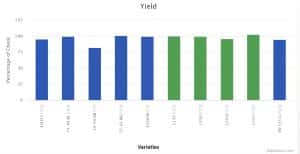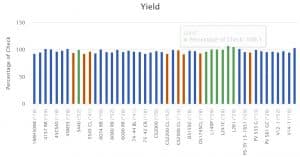Having diversity in canola variety genetics will improve the resilience of the farm over time. The weed management message, “If it works, change it”, should apply to genetics and disease resistance, too.
Here are two approaches to use in combination when choosing varieties:
1. Always try new varieties with different/new traits to keep genetics moving forward on your farm. You might even split a few fields, growing a different variety on each side — seeded the same day, in the same conditions, with the same fertilizer rates. (See the UCC protocols for on-farm trials.) Compare different sources of blackleg resistance or clubroot resistance. Compare older versus newer varieties. As part of variety decisions, consider the risk in growing only one variety on all acres in any year. In this situation, growers have no genetic flexibility to cope with different environmental conditions or changing pest populations. And if yields are lower than expected, they won’t know if it’s a general canola issue (all varieties) or specific to their one variety. Choosing varieties can be a challenge. Unless you’ve tried a variety yourself, a lot of traits are hard to choose looking at literature. This is where data from canolaperformencetrials.ca is helpful. (Select ‘Compare varieties’ from the default ‘Search all varieties’ option and then select your preferences for steps 1-4 and view the results by yield, maturity, height or lodging.)
2. Recognize what is holding back yield on each individual field. Review scouting records, and use genetic solutions (and other management changes) to fix the problem. For example, if clubroot is holding back yield, then clubroot resistance (CR) and rotation of CR sources is the seed priority. If harvest loss is the biggest issue, then maturity and harvestability traits are the priorities. Look beyond yield. In fact, choose the traits you need — blackleg resistance, clubroot resistance, pod-shatter tolerance, days to maturity, lodging, etc. – and make a short list of varieties that provide those traits. Then pick from among that list based on yield potential, price and availability. Keep in mind that different varieties don’t necessarily mean different resistance sources when it comes to diseases like clubroot and blackleg.
Canola Performance Trials update: While 2019 preliminary results will be posted on the CPT website soon, there is great value from considering more than one year of data in the meantime. The previous year’s data, which is used in many of the canola variety guides that are circulated prior to harvest, can still be viewed in the 2018 data booklet – including small plot and field scale straight cut results (which aren’t included in the CPT database).


